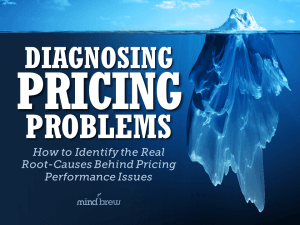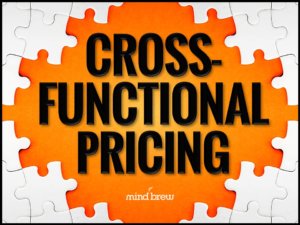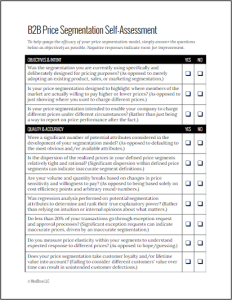In medical settings, the treatment that you receive will only be effective if it’s based on a correct diagnosis.
For example, imagine that you go to the doctor because you’ve been having chronic headaches. If the physician believes that your headaches are caused by sinus pressure due to allergies, they might recommend some over-the-counter decongestant and antihistamines and send you on your way.
But if you actually have a brain tumor, those medications aren’t going to do any good. Even worse, wasting time on this ineffective treatment will give the tumor time to grow even larger, potentially putting your life at risk.
We see something similar happen in B2B pricing when teams fail to get to the root cause of problems. Here are some examples:
- Misreading Market Signals: In the same way that the doctor in the example attributed the headache to the wrong cause, pricing teams sometimes jump to the wrong conclusions when they see a change in the market. For example, if a company experiences a decline in sales volume, the pricing team might naturally assume that their prices are too high. They then lower prices across the board. But sales continue to drop. It’s not until much later that they realize the real issue was an aggressive new competitor entering the market. Cutting prices only made things worse. They would have been much better off focusing on value messaging.
- Misaligned Incentives: Sometimes, the wrong diagnosis happens because different departments have misaligned incentives. This internal conflict can lead to reactive pricing decisions that address short-term goals at the expense of long-term profitability. Consider the example of a company that incentivizes its sales team based on sales volumes while directing the pricing team to maximize margins. The sales team will believe that the solution to every problem is to lower prices, no matter how often the pricing team raises them.
- Erosion of Value Perception: You can also run into trouble if you set prices without understanding how customers perceive your value. Think about a situation where a company has a reputation for offering a premium product, but sales have slowed. The pricing team might lower prices. That attracts more customers—but a different kind of customers than they had previously. That decision erodes the perceived value of the offering. In fact, the real reason for slow growth was a complex buying process that provided a barrier to entry. If the company had addressed that issue, they could have grown while maintaining their reputation.
How to get better at diagnosing B2B pricing problems
So how do you avoid making mistakes like these? We have some suggestions:
- Dig for Real Root Causes: Instead of relying on your intuition and surface-level answers, interrogate your data. By questioning your knee-jerk reaction, you can avoid jumping to the wrong conclusions. The webinar on Diagnosing Pricing Problems can help.
- Collaborate Cross-Functionally: Other teams probably see the situation differently than you do. If the doctor in the example had consulted with neurology, they might have reached a different diagnosis. In the same way, getting opinions from sales, marketing, finance, and elsewhere in the company can help you get a more wholistic view of your problems. We cover this idea in more detail in More Effective Cross-Functional Pricing.
- Test Before You Treat: Clearly, the doctor in the example should have done at least a CT scan. The equivalent in the B2B world is to run small-scale pricing experiments or pilot programs to validate your assumptions before rolling out changes across the board. We explain how in Pricing Pilot Programs.
No doctor gets every diagnosis right 100% of the time. And you likely are going to make a few mistakes now and then in determining the root cause of your sales problems.
However, by consistently going through these steps, you will improve your odds of getting it right, ultimately resulting in a healthier company.
















